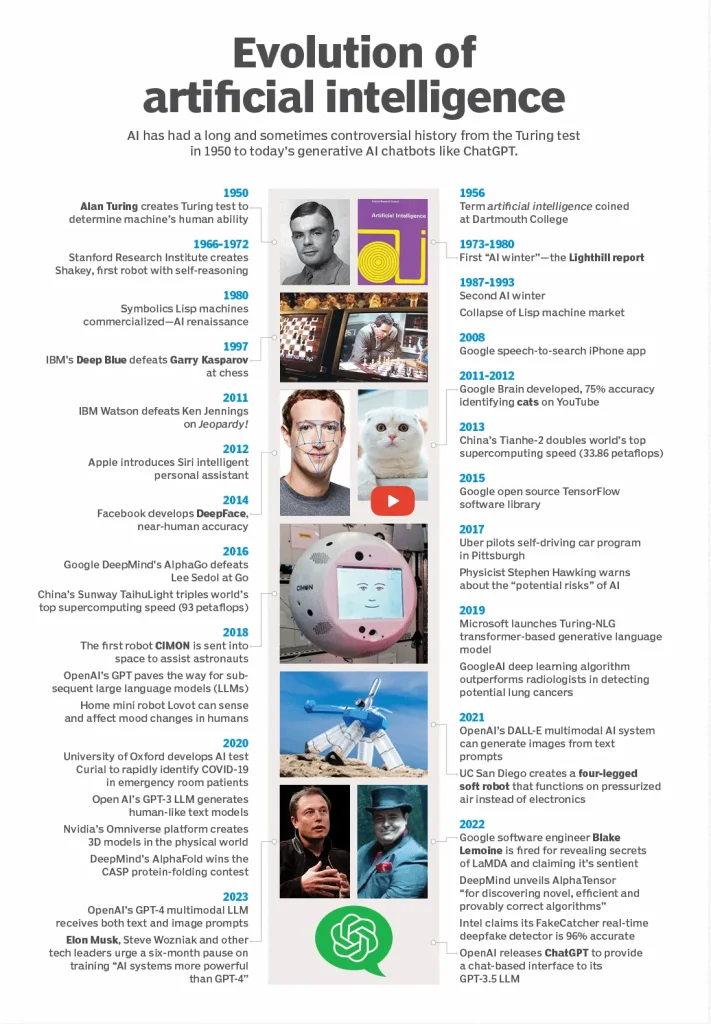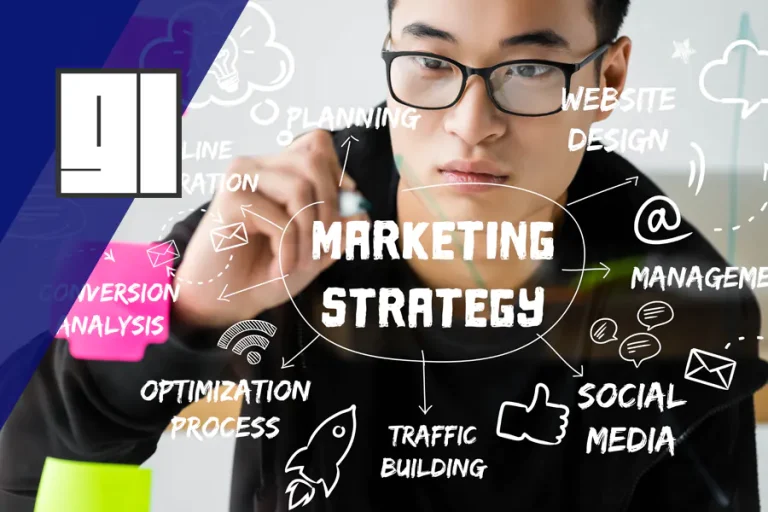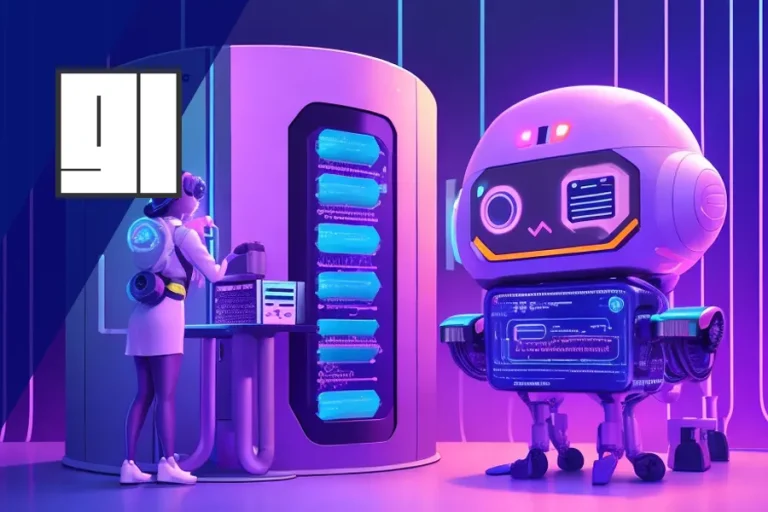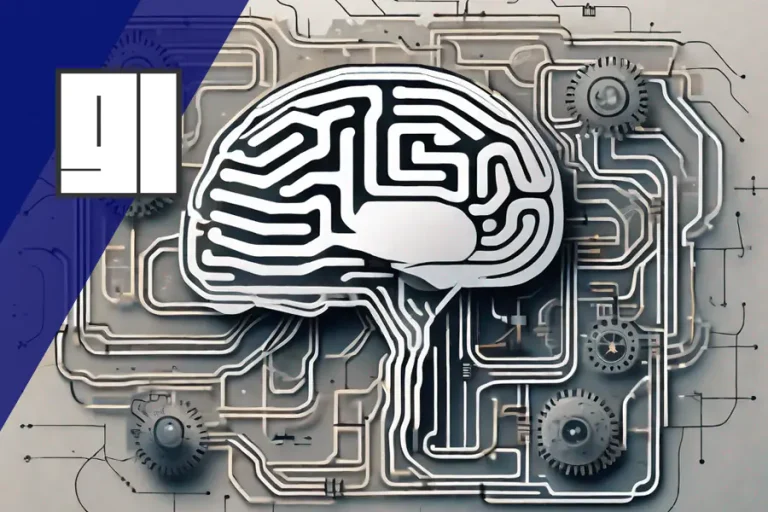What is AI: Understanding Artificial Intelligence
What is AI?
We might picture science fiction robots with human-like intelligence and emotions when we think of artificial intelligence. So what is AI exactly? AI is simply a field of computer science dedicated to creating machines that can perform tasks that normally require human intelligence. These tasks could include anything from recognizing speech patterns to identifying objects in images.
What’s In It For You?
- History: Learn about the evolutionary process of AI.
- How: Learn about the different types of AI and how they work.
- Applications Discover fields where AI is used today.
- Misconceptions: Learn what AI is not and where fears might come from.

A Brief History of AI Development
Artificial intelligence has been a research topic since the early days of computing. In 1956, researchers organized the Dartmouth Conference, which many consider the birthplace of modern AI research. At this conference, they proposed the development of intelligent machines that could “perform any intellectual task that a human being can.”
Over the next several decades, progress in AI was slow but steady. Researchers developed algorithms for machine learning and neural networks, which allowed computers to identify patterns and learn from data.
However, it was in the 21st century that major breakthroughs were made in AI development. In 2011, IBM’s Watson supercomputer famously competed on Jeopardy!, defeating two former champions.
This event brought attention to the potential power and capabilities of artificial intelligence. Since then, there have been many advancements in natural language processing and deep learning algorithms.

Image by TechTaregt via techtaregt.com
Why Understanding AI is Important
As we continue to develop more advanced forms of artificial intelligence technology, it becomes increasingly important for us all to be familiar with what these tools are capable as well as not capable of doing — for our jobs; society; safety; even entertainment purposes like gaming or social media apps — so we don’t fall victim easily into their unintended consequences or manipulations down the line. In short, understanding how this technology functions and its limitations can help us better use it and be more prepared for its impact on the world.
Types of AI
Artificial Intelligence (AI) is a broad field divided into two categories: Narrow or Weak AI and General or Strong AI. The main difference between these types is their level of intelligence.
Narrow or Weak AI
Narrow AI refers to machines that are designed for a specific task. For example, a chatbot that only responds to customer inquiries about product returns and refunds: these systems have limited capabilities and cannot perform other functions outside their programmed tasks.
Despite their limitations, narrow AI has proven incredibly useful in various industries such as healthcare, finance, and transportation. They have helped automate tedious tasks like data entry, reduce errors caused by human oversight, and improve overall efficiency.
General or Strong AI
General or strong AI is the holy grail of artificial intelligence because it replicates human intelligence. Imagine an intelligent machine able to think abstractly, reason logically, understand complex concepts like emotions and empathy, and form opinions based on experience – this is what general or strong AI aims to achieve.
While scientists have made significant progress in developing advanced neural networks capable of simulating human brain function to some extent (e.g., DeepMind’s AlphaGo), we are still far from achieving true general intelligence similar to humans. Understanding the different types of artificial intelligence helps us appreciate the current state of technology development while offering insight into future possibilities where machines replicate human cognition competently.
How AI Works
Machine learning
Machine learning is how machines learn to perform specific tasks based on their fed data. The machine takes in data, learns from it, and makes predictions or decisions without human intervention.
This type of AI is classified as either supervised or unsupervised learning. Supervised learning involves feeding the machine labeled data that it can use as a reference to make accurate predictions. In contrast, unsupervised learning involves feeding the machine unlabeled data and letting it identify patterns on its own.
Neural networks
Neural networks are modeled after the structure of the human brain, with interconnected nodes that allow for complex decision-making based on input data. These nodes are organized into layers, each responsible for processing different types of information.
The input layer receives raw data, which is then processed by successive hidden layers until the output is produced. This output can be used to make predictions or decisions based on a specific task.
Deep learning
Deep learning is a subset of machine learning involving training neural networks with multiple hidden layers. The additional layers allow for more complex decision-making and pattern recognition, making deep learning particularly useful for tasks such as image classification and natural language processing. Machine learning, neural networks, and deep learning are all integral components of how AI works.
These processes allow machines to learn from large amounts of data without explicit programming by humans. By understanding these technologies, we can better understand how AI functions and its potential applications in various fields such as healthcare, finance, and transportation.
Applications of AI
Healthcare: Revolutionizing Medicine with AI
Artificial intelligence transforms the healthcare industry by providing faster and more accurate diagnoses, improving patient outcomes, and reducing costs. With machine learning, AI-powered tools can analyze vast amounts of medical data to detect patterns and make predictions, allowing doctors to diagnose diseases earlier and more accurately. For example, AI algorithms can quickly detect signs of a stroke in CT scans or MRIs, aiding doctors in making urgent decisions that can save lives.
AI is also being used for drug development; researchers are using machine learning to sift through enormous amounts of data on molecules to identify potential candidates for drug therapies. In addition, virtual nursing assistants powered by AI are helping patients manage chronic conditions by reminding them when to take medication or monitor their symptoms.
Finance: Using AI for Better Investment Decisions
Banks and financial institutions are adopting artificial intelligence to gain a competitive edge by improving their ability to make investment decisions. Machine learning algorithms analyze market trends, historical data, price movements, and company news articles to help investors make informed decisions. Chatbots enabled with natural language processing have also transformed customer service in finance; customers can now get real-time updates on their accounts or receive personalized financial advice without speaking with a human representative.
AI also plays an essential role in fraud detection and prevention; it uses pattern recognition algorithms to identify unusual financial activity that may indicate fraud. These algorithms enable banks and credit card companies to stop fraudulent transactions before they happen.
Marketing: Enhancing Strategies with AI
Artificial intelligence is revolutionizing the marketing industry by providing insights into consumer behavior, improving customer engagement, and optimizing marketing strategies. AI-powered tools can analyze vast amounts of consumer data to identify patterns and predict future buying behaviors, enabling marketers to create personalized campaigns that resonate with their target audience. For example, AI algorithms can analyze social media activity, online search patterns, and purchase history to predict what products a consumer might be interested in.
AI is also being used to automate repetitive tasks in marketing, such as email marketing and social media posting, freeing up time for marketers to focus on more strategic tasks. Furthermore, AI-powered chatbots are transforming customer service in marketing by providing instant responses to customer inquiries, improving customer satisfaction and engagement.
One of the most exciting applications of AI in marketing is in the field of copywriting. AI-powered copywriting tools can generate compelling content that captures the brand’s voice and resonates with the target audience. These tools use machine learning algorithms to analyze successful marketing campaigns and generate copy likely to engage consumers. This saves time and ensures a consistent brand voice across all marketing channels.
Transportation: Driving Innovation with Intelligent Vehicles
Self-driving cars have gained popularity as car manufacturers incorporate sophisticated AI technologies into vehicles. These technologies enable autonomous cars to sense their environment accurately, including road hazards like pedestrians or cyclists, while using machine learning algorithms that adaptively control the vehicle’s movement based on traffic conditions.
AI-powered public transport systems are also in the works. AI algorithms can optimize routes and schedules based on passenger demand, reducing costs and improving service efficiency.
Entertainment: Enhancing User Experience with AI
AI is revolutionizing the entertainment industry by providing personalized content experiences for users. For example, streaming services like Netflix and Amazon Prime Video use machine learning algorithms to recommend movies and TV shows based on users’ viewing histories or preferences.
AI’s transformative power extends further into art, reshaping creativity and innovation. AI-driven art, often called AI Art, leverages machine learning algorithms to generate awe-inspiring pieces that push the boundaries of traditional artistic expression. This fusion of technology and art is not just producing captivating artworks. Still, it is also stirring discussions on various facets of artistry, including authenticity, ownership, and the vital role of human creativity.
When powered by AI, virtual assistants like Siri or Alexa can also generate engaging conversations with humans, making users feel like they are talking to real people. This human-like experience enhances user experience and is an excellent way to keep consumers engaged with brands. AI has limitless potential in various industries.
It is changing our lives by making processes more efficient while improving quality. As technology advances rapidly, we must embrace it while also being mindful of its limitations and ethical implications.
Unleashing the Advantages of AI
Artificial Intelligence has been a groundbreaking innovation that has disrupted several industries. Here are some of the advantages of AI that have made it so popular:
Efficiency
AI has been known to automate mundane and repetitive tasks, which frees up human resources for more complex and creative work. Processes that would take hours or even days can now be accomplished in minutes or seconds with the help of AI, allowing businesses to operate more efficiently and effectively.
For instance, customer service chatbots powered by AI can handle inquiries from customers 24/7 without requiring a human presence. The machine learning models behind the chatbots can understand natural language processing, detect intent, and respond accordingly – giving customers quick answers to their questions.
Accuracy
One significant benefit of using AI is it is consistently producing accurate results. Machine learning algorithms can identify patterns and trends humans might miss due to limitations like fatigue, emotion, or simple oversight.
For example, radiologists use AI-powered systems to improve the accuracy of medical diagnosis by analyzing vast amounts of data from patient records and images. This technology helps doctors identify issues faster and offers more accurate diagnoses than a human could alone.
Automation
Another advantage of using AI is its ability to automate processes end-to-end by eliminating error-prone manual interventions. Automation increases productivity since machines never tire or need breaks as humans do. Manufacturers use robots in assembly line production because they are efficient at repetitive tasks without experiencing fatigue or boredom like a human worker would experience doing the same job for hours on end.
The Dark Side: Disadvantages of AI
While there are many advantages to using Artificial Intelligence in various industries, there are some ethical concerns around it as well as drawbacks we should consider before implementing them ad-hoc:
Job Displacement
One of the more significant concerns for AI’s implementation is its potential to displace human workers. As AI automation replaces tasks that humans once performed, people fear job losses at a massive scale.
Undoubtedly, there will be job losses in certain industries as machines handle more and more routine tasks. However, many experts agree that AI will create new jobs that didn’t exist before and require unique skill sets, so it’s not all doom and gloom.
Ethical Concerns
Another critical consideration when implementing artificial intelligence is ensuring ethical standards are met. There are concerns around transparency regarding how algorithms make decisions, where data comes from, and who controls it.
This includes concerns about privacy violations or biases in decision-making algorithms. For instance, facial recognition technology has been under scrutiny recently due to reports of biased results based on skin color or gender.
Dependence on Technology
With the rise of AI-powered solutions, some experts worry that we may become too reliant on technology. What happens when something goes wrong?
How much control do humans have over these systems? The potential for catastrophic failure is real.
For example, self-driving cars have been known to malfunction before, causing accidents resulting in injuries or deaths. It highlights the importance of thinking critically and weighing risks before fully embracing AI-powered solutions across all industries.
While there are clear benefits to utilizing artificial intelligence technologies across different sectors, such as finance or transportation, they also come with drawbacks we must consider carefully.
- For example, AI can automate and improve transaction processing or fraud detection in the financial sector. Still, it may also lead to job losses due to automation or bias in loan approvals if not properly managed.
- In the transportation industry, self-driving vehicles promise to reduce accidents caused by human error. Still, they may also raise ethical questions around decision-making in accident scenarios or impact jobs in the trucking industry.
It’s up to policymakers and innovators alike to strike a balance between maximizing the advantages of AI and minimizing its negative effects on society as a whole.
- Policymakers could institute regulations requiring transparency in AI decision-making or limit the degree to which automation can replace jobs.
- Innovators, on the other hand, can work to develop AI in ways that are not only effective but also ethical, by using inclusive data sets, for example, to avoid algorithmic bias, or by innovating in fields like ‘assistive AI’ that complement human labor rather than replace it.
Through careful regulation and conscientious innovation, we can enjoy the benefits of AI while mitigating the risks it poses to society.
Misconceptions about AI
Artificial intelligence has been a topic of discussion for decades, and with its increasing presence in our daily lives, it’s important to dispel some common misconceptions. One of the most persistent fears surrounding AI is the notion that robots will eventually take over the world, leading to a catastrophic “robot uprising.”
Fear of a “Robot Uprising”
Despite what science fiction movies like Terminator, I Robot, or The Matrix may have us believe, there is no reason to believe that machines will suddenly decide they want to overthrow their human masters. AI systems have specific goals and objectives and cannot act outside those parameters without human intervention.
While there are concerns about artificial intelligence’s potential misuse or unintended consequences, we should not let our imaginations run wild with unfounded fears. Instead, we should focus on developing responsible AI policies and ensuring these technologies are used for the greater good.
The Belief that Machines Will Replace Humans Entirely
Another common misconception about artificial intelligence is that it will eventually replace human workers. While it’s true that automation has led to job displacement in certain industries, this trend is not unique to AI. Many experts predict that while AI may automate certain tasks and roles, it will create new opportunities for human workers.
For example, machine learning algorithms can analyze vast amounts of data much more quickly than humans could ever hope to do on their own. However, these algorithms still require humans to interpret and decide based on the results.
Ultimately, AI technology should be seen as a tool for augmenting human capabilities rather than replacing them entirely. By working together with intelligent machines instead of against them or in competition with them, we can unlock new levels of productivity and innovation while preserving what makes us uniquely human.
The Future of AI: Where Will It Take Us?
Artificial Intelligence has come a long way since its inception, and there is no telling where it will take us. The potential applications for AI are limitless, and many experts believe we are only scratching the surface of what is possible. In this section, we’ll explore some predictions for the future of artificial intelligence.
Autonomous Robots
One area where AI is likely to impact the future is robotics. Autonomous robots, machines that can operate independently without human intervention, are already being developed for various applications.
- In manufacturing, AI-powered robots assemble complex electronics faster and more precisely than human workers, but this automation could potentially displace jobs.
- In healthcare, we’re beginning to see robots assisting in surgeries, enhancing precision, and reducing the chance of human error. However, they raise issues around liability and consent if something goes wrong.
- For transportation, autonomous drones, and self-driving vehicles could streamline delivery services or reduce accidents, but they also pose questions about safety and regulatory oversight.
One particularly exciting development area is swarm robotics, which involves large groups of autonomous robots working together toward a common goal.
- An example could be hundreds of drone robots scanning an area for survivors after a natural disaster. This task would be far more time-consuming and dangerous for human search-and-rescue teams.
- In agriculture, swarm robotics could involve groups of small robots working in unison to plant, tend, and harvest crops, potentially increasing efficiency and reducing the need for harmful pesticides.
AI-Powered Healthcare
Another area where AI has the potential to make significant advances is in healthcare. Artificial intelligence has already been used extensively in diagnostic tools like radiology scans or X-rays to help doctors make more informed decisions about patient care.
However, it’s believed that AI will soon be able to play an even greater role in healthcare by analyzing patient data from wearables and other sensors to identify patterns or symptoms before they develop into serious medical problems. AI analysis could lead to earlier diagnosis and treatment interventions for patients with chronic illnesses like heart disease or diabetes.
The Singularity
“The singularity” refers to a hypothetical point in time when machine intelligence surpasses human intelligence – often portrayed as self-aware or taking over control of humans. Many experts believe that it’s only a matter of time before AI surpasses human intelligence. Some believe we could see this happen within the next few decades.
Artificial intelligence will likely profoundly impact our lives in the future. The possibilities are endless, and we can’t wait to see what the future holds for this exciting field.
Conclusion: Understanding AI is Vital for Our Future
Artificial intelligence has made its way into our lives in ways we may not even realize. AI’s impact will only increase in the coming years, from personal assistants like Siri and Alexa to self-driving cars.
We need to understand how it works, its capabilities, and its limitations to make informed decisions about how we want AI to shape our world. One of the most important reasons to understand AI is that it will play a significant role in the future job market.
While many fear that machines will replace humans entirely, experts predict that there will be a shift towards more skilled jobs that require collaboration with AI. We must prepare for these changes by developing new skills and understanding how to work alongside intelligent machines.
Additionally, as AI becomes more integrated into our daily lives, ethical concerns surrounding its use are becoming increasingly important. For example, there are questions about privacy regarding using personal data to train algorithms or making decisions based on machine learning models.
By understanding these issues and advocating for the responsible use of AI technology, we can ensure that it benefits society. Understanding artificial intelligence is not just an interesting topic of conversation – it’s crucial for individuals and society as a whole.
As we continue to develop this technology and integrate it into our daily lives, let’s remember the importance of responsible use and collaboration between humans and machines. Let’s embrace the future with open minds and focus on creating a better world through understanding.

Graz is a tech enthusiast with over 15 years of experience in the software industry, specializing in AI and software. With roles ranging from Coder to Product Manager, Graz has honed his skills in making complex concepts easy to understand. Graz shares his insights on AI trends and software reviews through his blog and social media.







